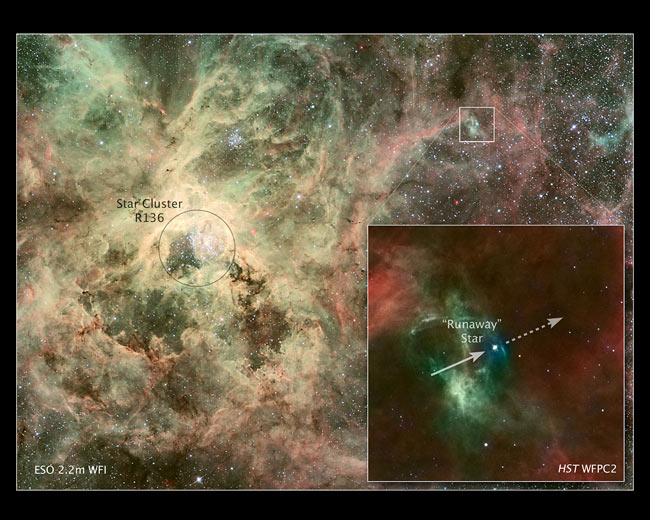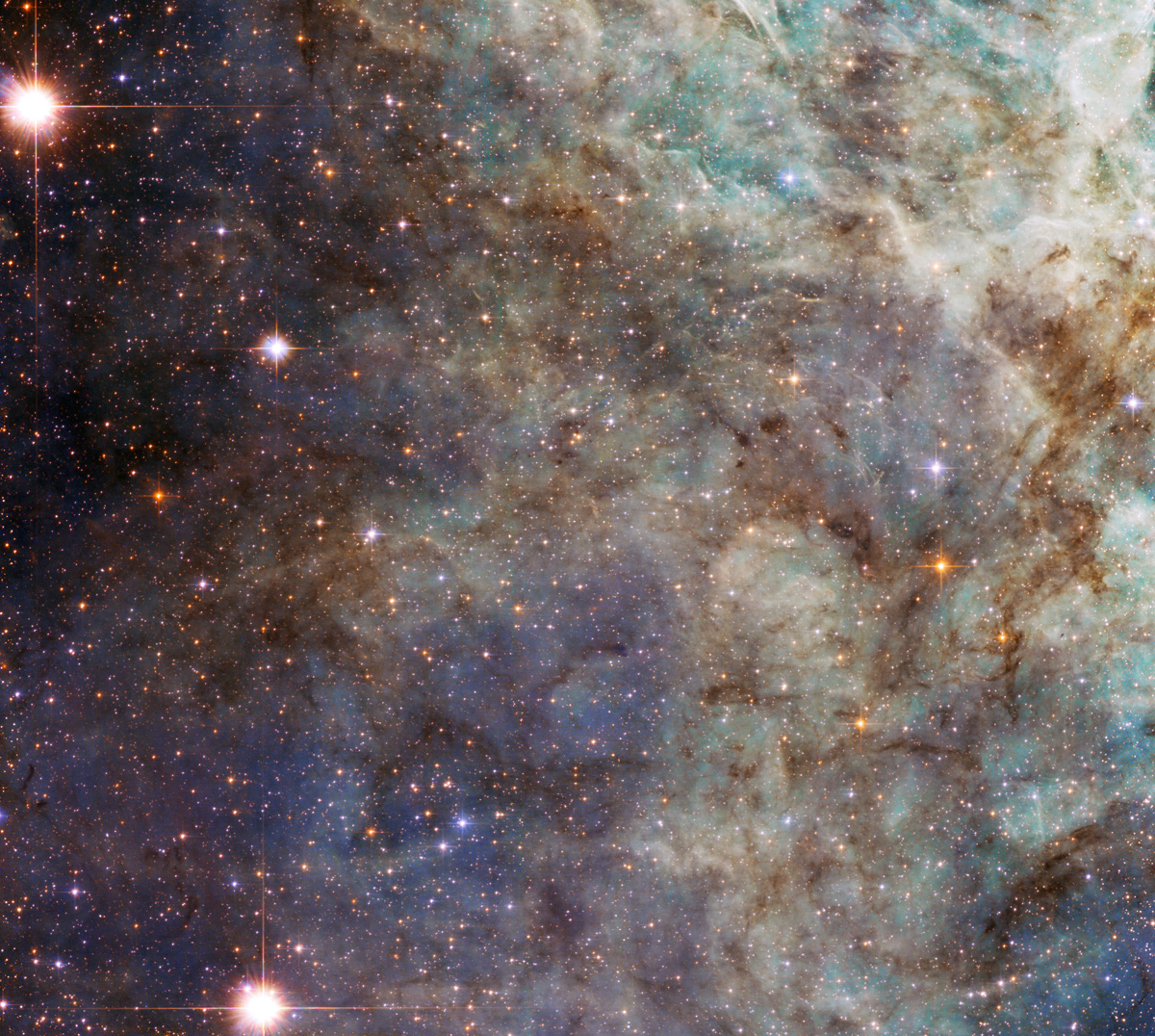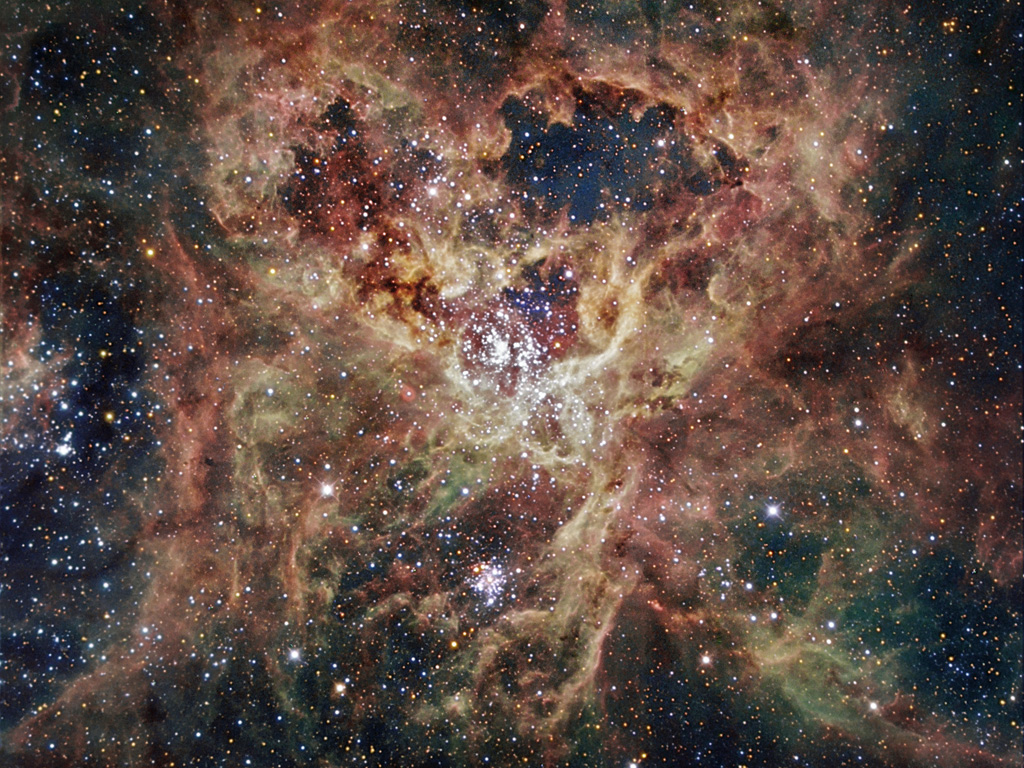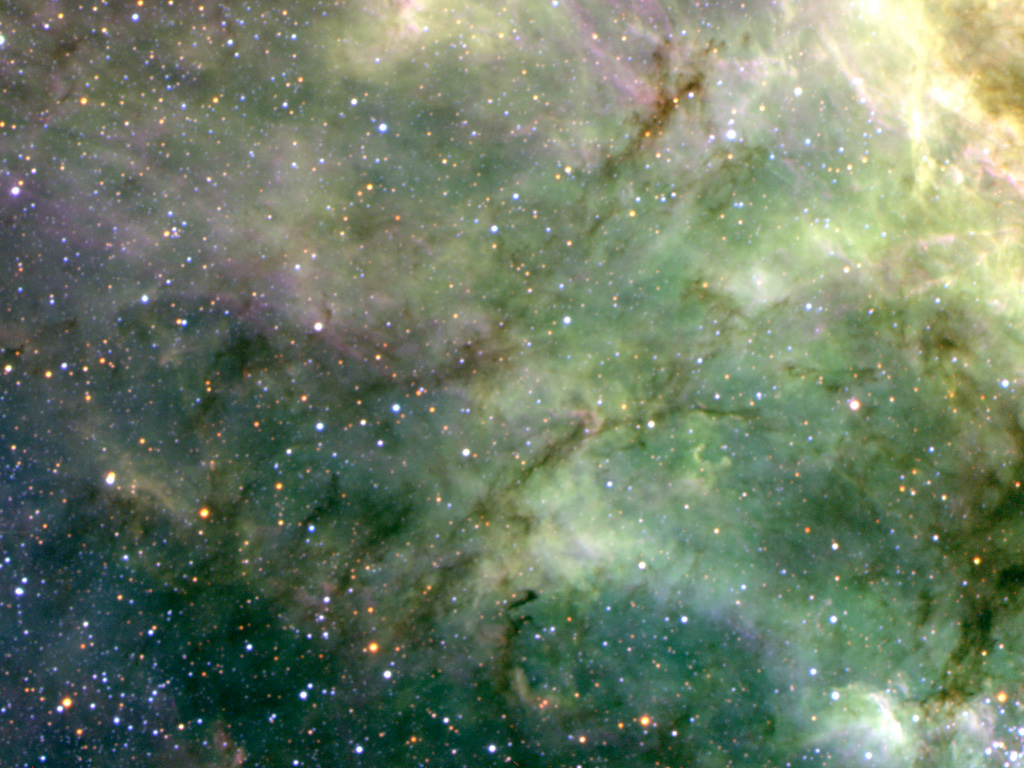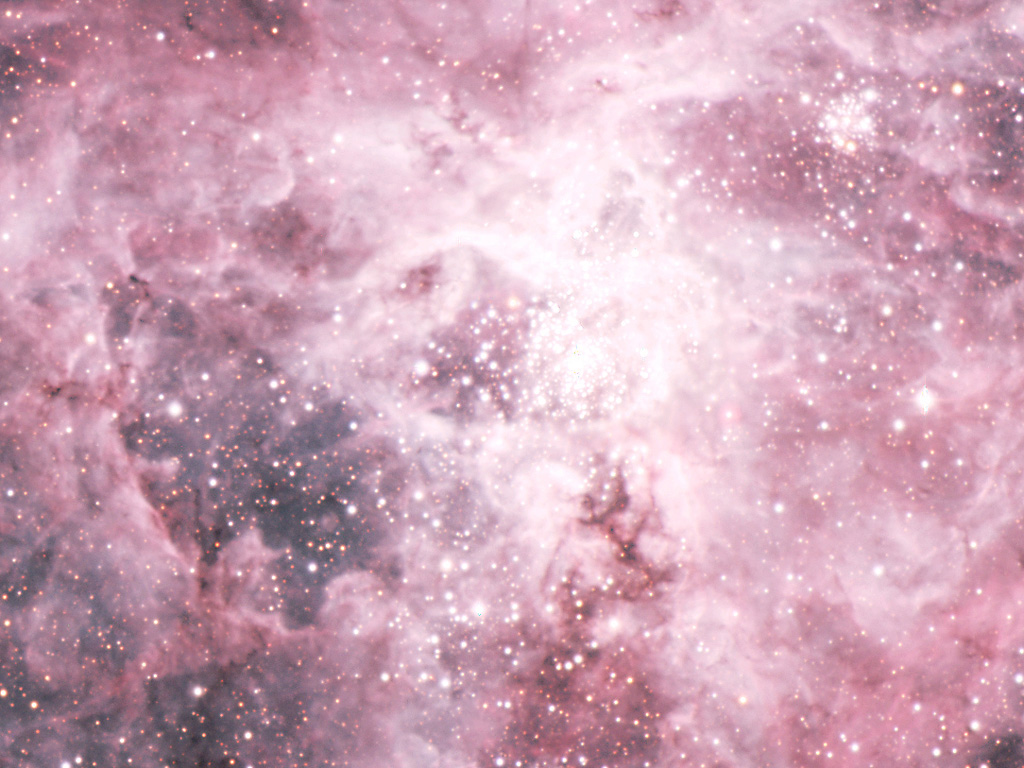Cosmic Spider: Amazing Tarantula Nebula Photos
Portrait of a Dramatic Stellar Crib
One square degree image of the Tarantula Nebula and its surroundings.
Tarantula Nebula Super-Cluster
The "super-cluster" R136 in the Tarantula nebula. From left to right: the Tarantula nebula and the R136 cluster within it.
Runaway Star Flees Birthplace at Breakneck Speed
This image of the 30 Doradus Nebula (AKA the Tarantula Nebula), a rambunctious stellar nursery, and the enlarged inset photo show a heavyweight star that may have been kicked out of its home by a pair of heftier siblings. The image was taken by the Wide Field and Planetary Camera 2 (WFPC2) aboard the NASA/ESA Hubble Space Telescope. The heavyweight star, called 30 Dor #016, is 90 times more massive than the Sun. In the wider view of 30 Doradus, taken with European Southern Observatory’s (ESO) Wide Field Imager at the MPG/ESO 2.2-metre telescope in Chile, the homeless star, located on the outskirts of the nebula, is centred within a white box.
Tarantula Nebula Detail
The NASA/ESA Hubble Space Telescope has taken this close-up of the outskirts of the main cloud of the Nebula.
Tarantula Nebula
Located inside the Large Magellanic Cloud (LMC) – one of our closest galaxies – in what some describe as a frightening sight, the Tarantula nebula is worth looking at in detail.
Filaments in the Tarantula Nebula
Filaments of ionized gas in the proximity of the R136 cluster, which lies beyond the lower left edge of the photo.
Central Area of the Tarantula Nebula
The bright core of the Tarantula Nebula with the cluster of hot stars. Note also the wisps of luminous gas extending as "legs" from the central area - this is how the nebula got its creepy name. Image released June 7, 2002.
Breaking space news, the latest updates on rocket launches, skywatching events and more!
Tarantula Nebula by Fred Herrmann
The Tarantula Nebula is located in the southern constellation Dorado (Dolphin Fish), 160,000 light-years from Earth. Fred Herrmann of Huntsville, Ala. captured this image remotely from Siding Springs, Australia. It was released to SPACE.com on Dec. 1, 2013.

Space.com is the premier source of space exploration, innovation and astronomy news, chronicling (and celebrating) humanity's ongoing expansion across the final frontier. Originally founded in 1999, Space.com is, and always has been, the passion of writers and editors who are space fans and also trained journalists. Our current news team consists of Editor-in-Chief Tariq Malik; Editor Hanneke Weitering, Senior Space Writer Mike Wall; Senior Writer Meghan Bartels; Senior Writer Chelsea Gohd, Senior Writer Tereza Pultarova and Staff Writer Alexander Cox, focusing on e-commerce. Senior Producer Steve Spaleta oversees our space videos, with Diana Whitcroft as our Social Media Editor.


